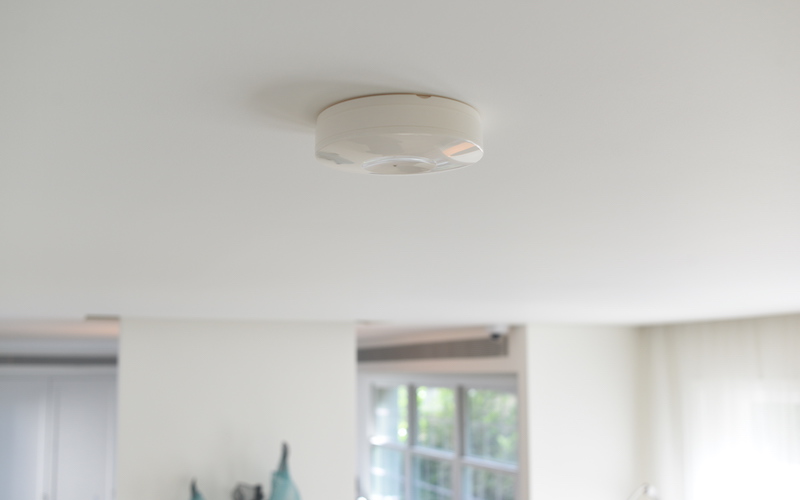Imagine you walk into a room and every device instantly adjusts to your preferences. You didn’t touch anything, you didn’t ask your voice assistant to trigger a routine, and you didn’t have your face scanned by a panel on the wall. You simply enter the room and watch it come to life, perfectly personalized for your preferences.
The dream is now a reality, thanks to an ingenious and deceptively simple device created by CEO Oren Kotlicki and his team at IntelliThings. It’s called the RoomMe and it looks like a smoke detector. It’s slim, beige, and sort of… unimpressive in appearance. But, that’s how it was designed.
Aesthetics
The goal of the RoomMe sensor is to disappear into the surroundings and seamlessly integrate with all of your smart devices. It detects the Bluetooth signal from one’s smartphone and creates a personalized user profile.
Whenever you enter a room with the RoomMe sensor enabled, it will detect your smartphone and set the room to your liking, triggering the lights to dim, the temperature to increase, or your favorite playlist to play.
Personalization
Kotlicki shared his vision when he created the RoomMe, “I’ve been working in the smart home market for a long time, and being there, I realized you buy this smart stuff but then you’re often unable to personalize it… to do that, the key is to be able to understand and identify who is actually in the room. When you know who is in the room, you can personalize pretty much everything.”
Installation
Kotlicki explained, “We were looking for a simple, do-it-yourself kind of solution that would enable people to get information about who is in the room. So that was really the challenge, to do something simple that everyone can easily install in minutes.” The RoomMe simply sticks to the ceiling, or any out-of-the-way location.
Prioritization
That sounds great if you live alone. But how does the sensor prioritize users in a multi-person home? Each person in the home is assigned a status, either master user or standard user. Master users are given top priority with settings, and when two standard users are in the same room, the RoomMe will use the personal settings of whomever was in the room first.
One can also set “room masters,” where a specific person has top priority in a specific room. This can be a helpful setting for children’s rooms.
Security
This seems like a lot of personal information for a sensor to be able to access. How is the data protected?
Kotlicki explained, “We identify smartphones, so you are a number to us – you have an identifier, but we really don’t know who you are. Further, RoomMe is a local solution; we don’t have a cloud. The data is sent between the sensor and the mobile application. That way it always works and it doesn’t rely on internet connectivity, so there really isn’t a privacy concern.”
Compatibility
RoomMe is currently compatible with Ecobee 3 and 4 thermostats and the following Philips Hue lights: Color Gen 1, Color Gen 2, White and Color Ambiance, Indoor Light Strip, Outdoor Light Strip, Iris, Bloom, Phoenix, and Hue White Bulb. It’s also compatible with the LIFX Original and Mini, Sonos PLAY:1, and Bose SoundTouch10.
Looking Ahead
The long-term vision for this technology is absolute personalization. That’s what the smart home was always meant to be, a personalized space with built-in conveniences that save time and facilitate comfort.
And for Kotlicki, that’s what the RoomMe will create. He notes: “Our vision and the reason we created our technology is that we think that every service and product you have at home has some level of personalization it can offer you. But, at the same time, we are doing it without violating the privacy of our customers, which is a huge issue today with voice assistants constantly recording us and sending our information to the cloud. We try to do it differently.”








